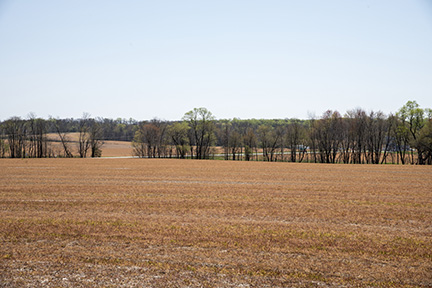Over the past few weeks armyworm moths have been captured in abundance in some of the traps placed at Purdue Ag Research Centers (see accompanying “Armyworm Pheromone Trap Report”). This happens most years and doesn’t indicate an outbreak is pending, but it is a reminder to conduct timely scouting in high-risk fields when the larvae are actively feeding, mid to later May. The increased popularity of cereal rye as a cover crop presents new opportunities for egg-laying females to find attractive food sources. The timing of planting this year, where many cover-cropped or weedy fields may be “planted green” is not helpful to those trying to avoid hungry armyworms.
Like every year, some armyworm moths overwinter here, but most are blown here from states to the south and west. Once here, they mate and lay eggs on preferred plants, those being grasses. Highest risk crops for egg laying is where dense grassy vegetation, e.g., wheat, grass hay, grass cover crops exist. Ideally, grass cover crops, will be terminated 2-3 weeks before corn emergence to prevent the “green bridge.” With this spring’s wet and windy weather, spraying of cover crops has been delayed and the 2-3 week window hasn’t been possible.
Don’t be dependent on Bt traited-corn, as high armyworm infestations will still cause significant damage before the Bt-proteins suppress their feeding. An essential reference to understand which Bt-traited corn has efficacy against specific insects is the “Handy Bt Trait Table.” This table, produced by Chris DiFonzo, Field Crops Entomologist at Michigan State University, is worth a look. It can be downloaded HERE. Remember that seed-applied neonicotinoid insectides have zero efficacy against armyworm, so don’t expect any help there. But there are many effective options for control with foliar insecticide sprays. A reminder that with this insect, especially when they are “marching” in large numbers, scouting still wins the day.

Terminated cover crop fields awaiting corn planting.


